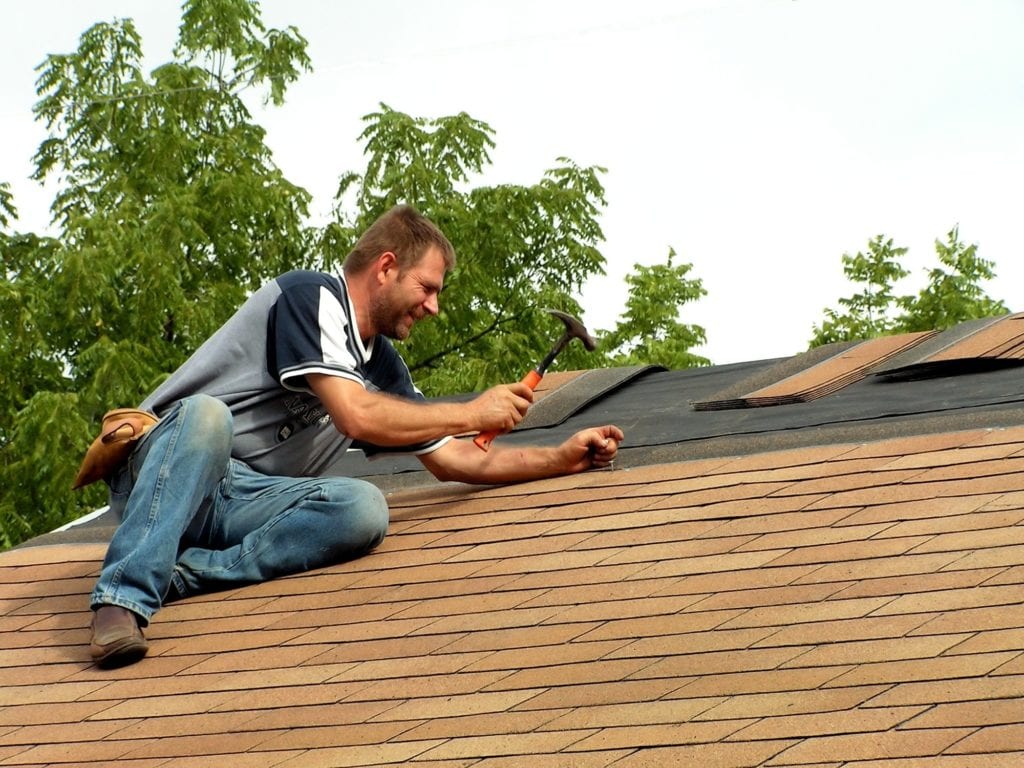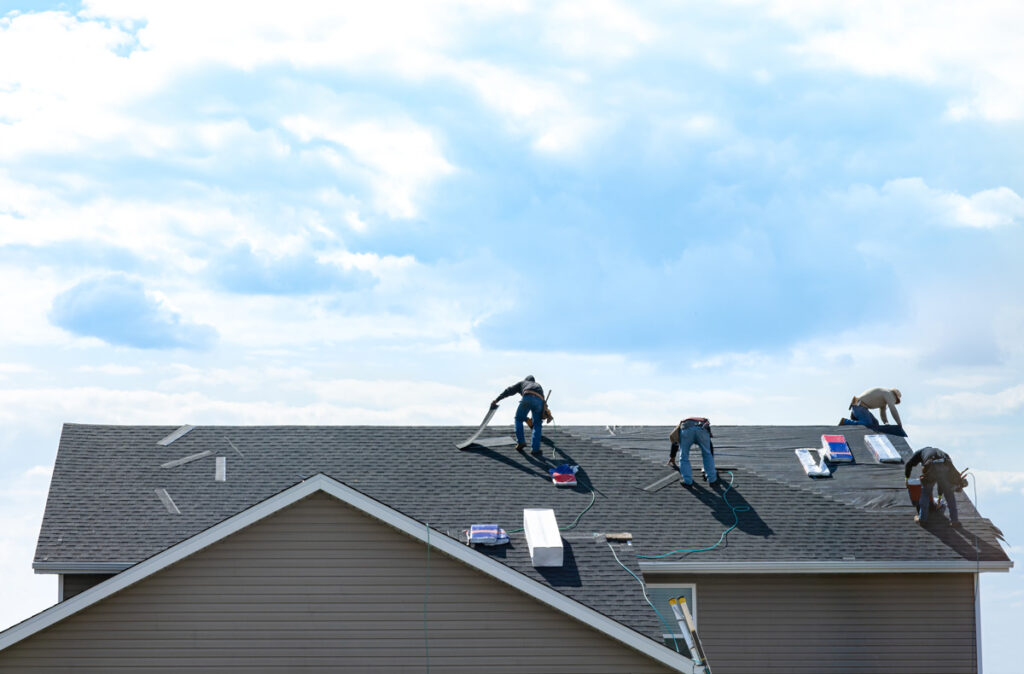Roofing Companies Oahu: Trusted Specialists for Your Roofing Needs
Understanding the Different Types of Roofings: A Comprehensive Overview for Homeowners
In the world of homeownership, picking the ideal roof covering style is a decision that brings considerable effects for both functionality and aesthetic appeal. With a variety of alternatives-- ranging from the standard gable to the modern flat-- each kind offers unique advantages and obstacles that ought to align with the house owner's ecological factors to consider and details demands. Understanding these distinctions not only help in making an educated option but also influences lasting maintenance and energy performance. As we discover the details of various roof covering kinds, it ends up being evident that dimension does not fit all; the best choice might stun you.
Gable Roofs
Gable roof coverings, identified by their triangular shape, are among one of the most popular roofing designs because of their simplicity and efficiency in losing water and snow. This style includes two sloping sides that fulfill at a ridge, permitting effective drainage and lessening the risk of water build-up. The high pitch commonly connected with gable roof coverings enhances their capability to take care of heavy rainfall, making them ideal for numerous climates.
Along with their useful advantages, saddleback roofs provide aesthetic convenience. They can be adapted to different building designs, from typical to modern homes. The design can likewise fit extra features such as dormer windows, which improve all-natural light and air flow in the attic room room.
Moreover, gable roofing systems supply enough room for insulation, adding to power performance. Property owners can select from a range of roof products, consisting of asphalt tiles, steel, and floor tiles, better boosting modification alternatives.
Regardless of their benefits, gable roof coverings might call for added assistance in areas susceptible to high winds or heavy snowfall. In general, the saddleback roof remains a favored choice due to its mix of capability, sturdiness, and visual appeal.
Apartment Roofs
Level roofings are commonly acknowledged for their minimal style and useful applications, especially in commercial and industrial settings (oahu roofing). These roofs include a virtually straight or straight surface, which enables very easy building and construction and functional room application. While they might lack the visual allure of pitched roof coverings, level roofing systems use numerous benefits, particularly in city atmospheres where maximizing space is essential
Among the main advantages of flat roofing systems is their accessibility. Homeowners can utilize the roofing room for different purposes, such as rooftop gardens, balconies, or solar panel installments. Furthermore, level roofings are commonly a lot more economical to keep and mount compared to their sloped equivalents, as they call for less materials and labor.
Nevertheless, level roof coverings do present certain challenges. Appropriate drain is important to stop water pooling, which can result in leakages and structural damages. Therefore, choosing top quality waterproofing products and routine inspections are crucial for guaranteeing long life. Common products utilized for level roofings consist of built-up roofing (BUR), customized bitumen, and single-ply membranes, each offering distinctive benefits. On the whole, level roof coverings function as a versatile and functional choice for many property owners and services alike.
Hip Roof Coverings
Hip roof coverings are defined by their sloped sides that assemble on top, forming a ridge. This style stands out from gable roofing systems, as all 4 sides of a hip roofing system slope downwards toward the walls, giving a more secure framework. The angle of the slopes can differ, permitting versatility in architectural aesthetics and capability.
Among the main advantages of hip roofings is their capability to stand up to hefty winds and adverse weather conditions. The sloped surfaces make it possible for much better water drainage, reducing the risk of leaks and water damages. Furthermore, hip roofings supply raised attic room space, which can be utilized for storage space or perhaps converted into my sources comfortable locations.
Nonetheless, constructing a hip roof can be a lot more complicated and pricey than simpler roofing types, such as saddleback roofs. The added product and labor included in developing the slopes and ensuring appropriate architectural stability can lead to higher expenditures. Despite these drawbacks, several house owners prefer hip roofing systems for their sturdiness, visual appeal, and potential for energy effectiveness.
Mansard Roof Coverings
Mansard roofing systems, commonly recognized by their special four-sided layout, attribute 2 inclines on each side, with the lower slope being steeper than the upper. This architectural design, stemming from France in the 17th century, is not only cosmetically appealing however practical, as it makes best use of the useful area in the top floors of a structure. The high reduced incline enables even more headroom, making it an optimal choice for lofts or attic rooms, which can be transformed right into living areas.
Mansard roofing systems are characterized by their convenience, suiting different building styles, from conventional to contemporary. They can be created with different materials, including asphalt shingles, slate, or metal, supplying homeowners with a variety of options to match their spending plans and preferences. In addition, the layout permits the assimilation of dormer home windows, enhancing all-natural light and ventilation in the upper levels.
Nevertheless, it is essential to consider the possible disadvantages. Mansard roof coverings may call for even more upkeep because of the complexity of their design, and their steep slopes can be challenging for snow and rainfall overflow. In general, mansard roofing systems combine elegance with usefulness, making them a prominent choice amongst home owners seeking distinctive building functions.
Shed Roof Coverings
As house owners progressively look for simplicity and functionality in their building designs, lost roofing systems have actually arised as a popular selection. Defined by a solitary sloping airplane, a shed roof provides a minimalist visual that complements different home styles, from modern to rustic.
Among the main benefits of a shed roof is its straightforward building and construction, which commonly converts to lower labor and material expenses. This layout permits effective water drain, decreasing the danger of leakages and water damages. Furthermore, the upright incline offers adequate space for skylights, boosting natural light within the interior.
Dropped roof coverings also provide adaptability in regards to use. They can be efficiently integrated right into enhancements, garages, or exterior frameworks like structures and sheds. Furthermore, this roofing system style can fit different roof covering products, consisting of steel, asphalt tiles, or even green roofing systems, lining up with green initiatives.
Nevertheless, it is necessary to take into consideration local environment problems, as hefty snow lots might necessitate modifications to the roof covering's angle or framework. On the whole, lost roofs provide a sensible and aesthetically pleasing alternative for property owners wanting to make the most of performance without jeopardizing style.
Conclusion


Gable roof coverings, defined by their triangular form, are among the most prominent roof covering styles due to their simplicity and efficiency in losing water and snow. oahu roofing. The look at here now steep pitch frequently browse around this web-site linked with gable roofs improves their capacity to handle heavy precipitation, making them appropriate for numerous environments
While they may lack the aesthetic charm of pitched roofings, level roofs provide many benefits, specifically in city settings where taking full advantage of room is critical.
